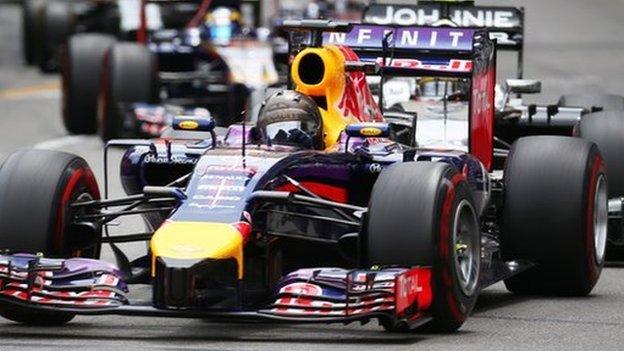Pirelli to be told to make faster tyre as F1 seeks more excitement
- Published
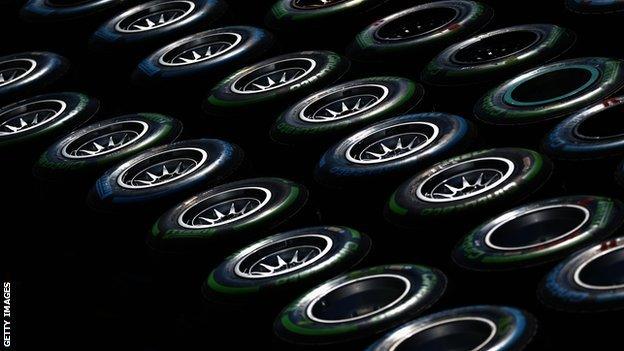
Pirelli have been in F1 since 2011
Pirelli will be told to produce a tyre drivers can push to the limit in 2017 as Formula 1 bosses seek to make the sport more exciting.
The current tyres prevent drivers from racing flat out because they degrade quickly and need to be nursed.
Cars will be as much as five seconds a lap faster in 2017.
Pirelli has already indicated its willingness to produce a racier tyre next year but says it needs more track testing to fulfil its work.
It has been allocated 12 days for this purpose in 2016.
The BBC has learned that the FIA, which governs F1, will instruct Pirelli to design a tyre that will allow drivers to push hard for longer.
Pirelli chairman Marco Tronchetti Provera told teams and drivers at a meeting earlier this month, where dissatisfaction with the current tyres was discussed, that it could produce whatever the F1 wanted as long as it had clear commission.
Pirelli has been given preliminary information about the performance the cars are expected to have in 2017 so it can start working on tyre design.
The FIA plans to outline how it wants tyres to perform and will provide all necessary data to the company by the end of March.
What's wrong with the tyres?
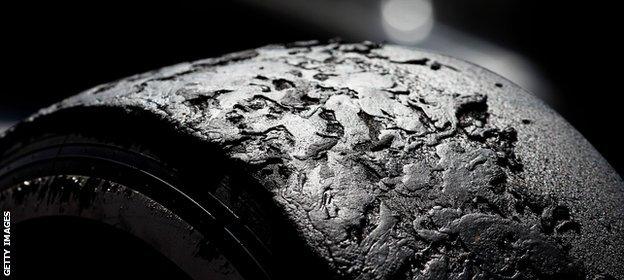
The current tyres prevent drivers from racing flat out
Pirelli entered F1 in 2011 and was asked to ensure races had multiple pit stops. It did this by producing tyres that suffer from thermal degradation.
Those tyres start to lose performance above a certain temperature - and never recover it.
That means drivers often race below the limit throughout most races in order to manage the tyres and produce the best possible race time.
Sometimes, they cannot even push to the limit on a qualifying lap because they need to keep the tyres below their temperature ceiling.
The drivers have never liked this, but the situation came to a head last season following two 200mph tyre failures at the Belgian Grand Prix.
Alexander Wurz, chairman of the Grand Prix Drivers' Association, recently told BBC Sport that drivers want tyres "fit for maximum-attack racing".
Pirelli has changed the tyre characteristics for 2016 in an attempt to make it less predictable when they run out of grip.
It hopes this will development will enable the drivers to push harder.
However, world champion Lewis Hamilton is not impressed with the new tyres after testing them this week in Barcelona.
"It's definitely not better, that's for sure," he said. "It just feels like a harder tyre and it's not giving me any more grip. I think I prefer last year's."
How do tyres influence rule-making?
Plans to speed up the cars for 2017 were briefly derailed when Pirelli said its would have to run its tyres at abnormally high pressures if they were to cope with planned increases in cornering forces.
Teams and the FIA began work on a watered-down set of changes, only for analysis to show that these would not meet performance targets.
New rules agreed this week represent a compromise, based on a proposal put forward by McLaren.
The aim is to have a greater proportion of the aerodynamic downforce produced by the underfloor and to have a greater proportion of mechanical grip.
The cars will be made wider - both in terms of the sideways distance between the wheels and the bodywork - while tyres will be bigger.
The expectation is cars will be four to five seconds a lap faster in 2017.
- Published24 February 2016
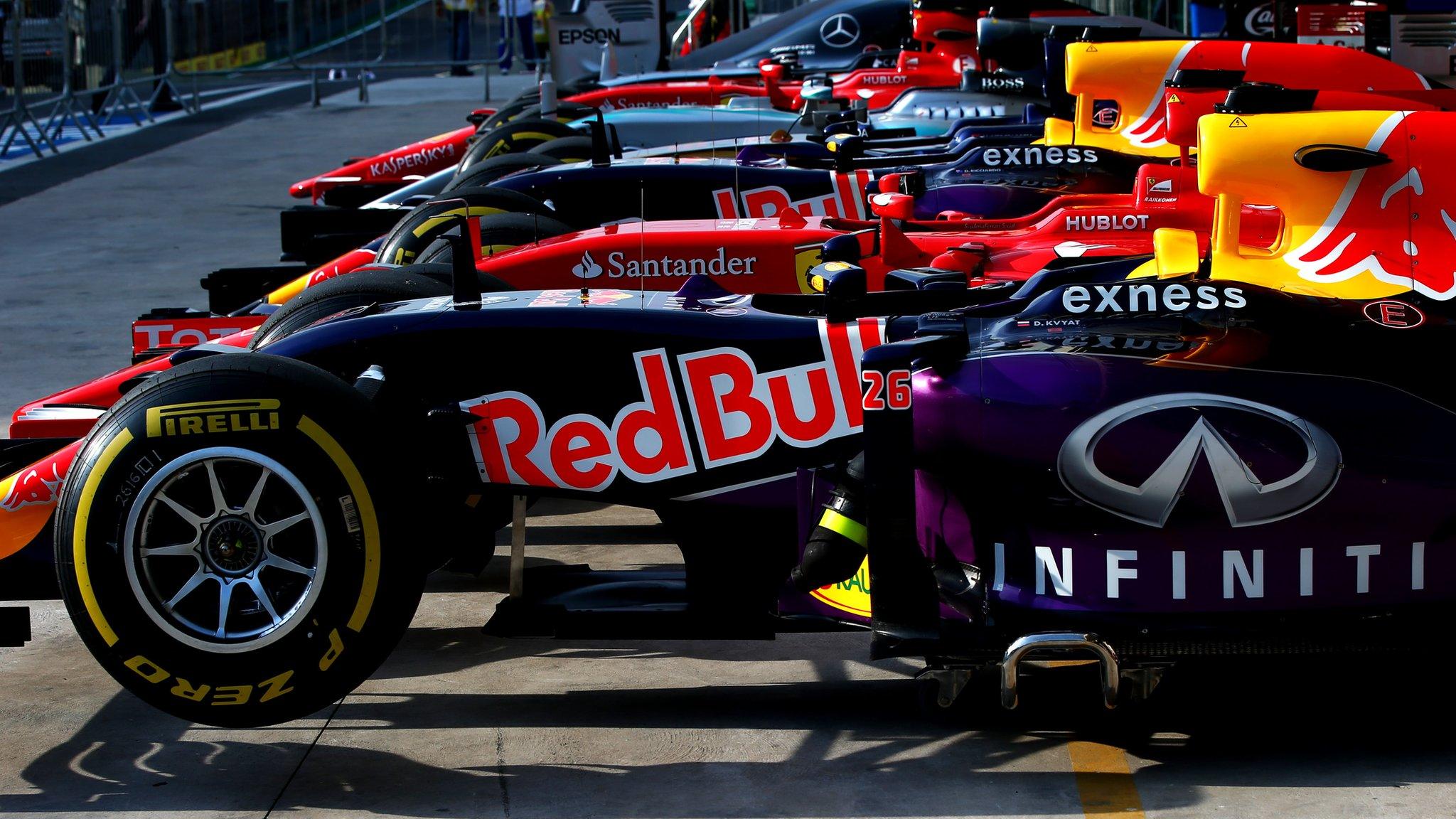
- Published3 February 2016
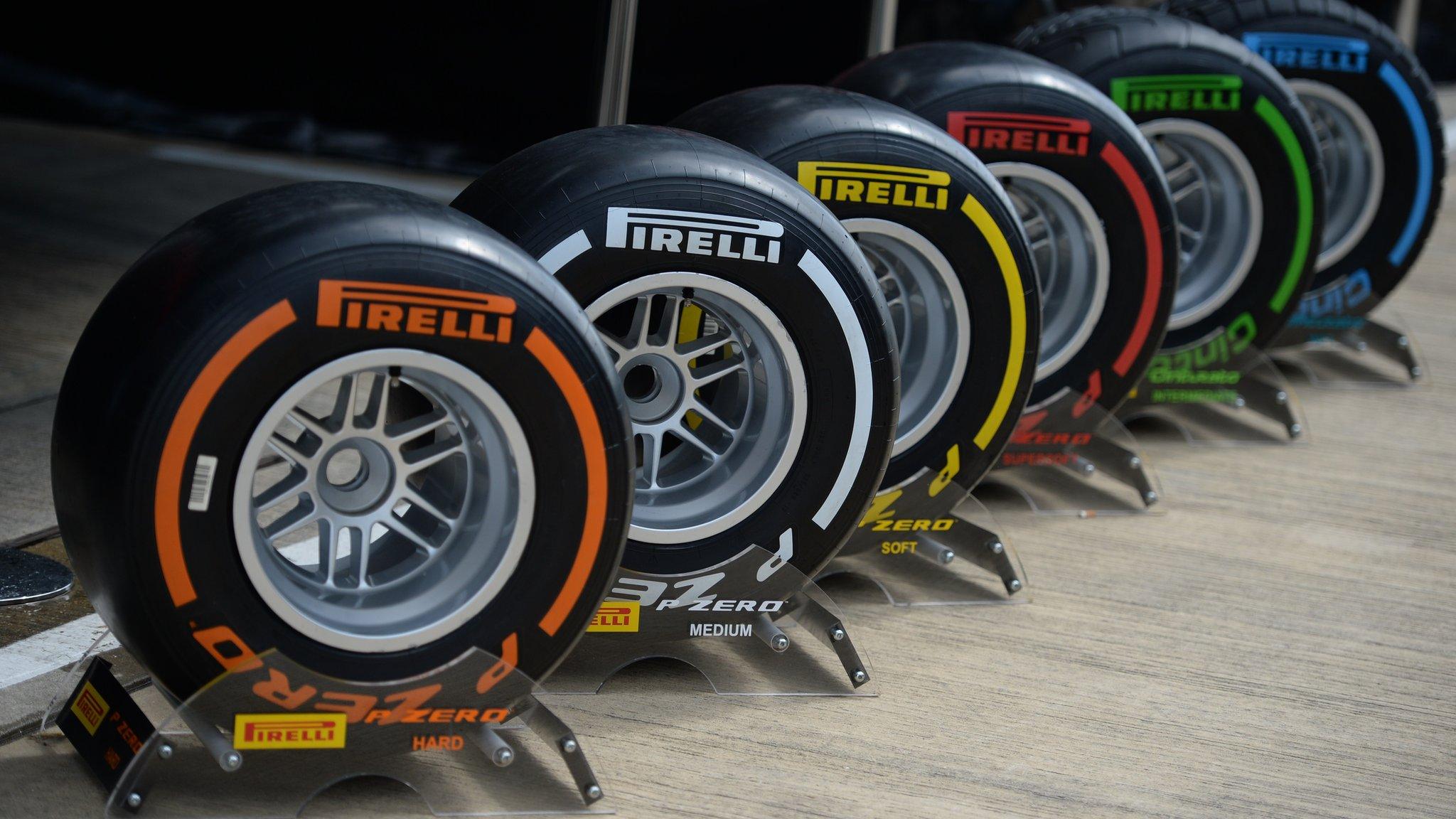
- Published25 January 2016

- Published18 December 2015
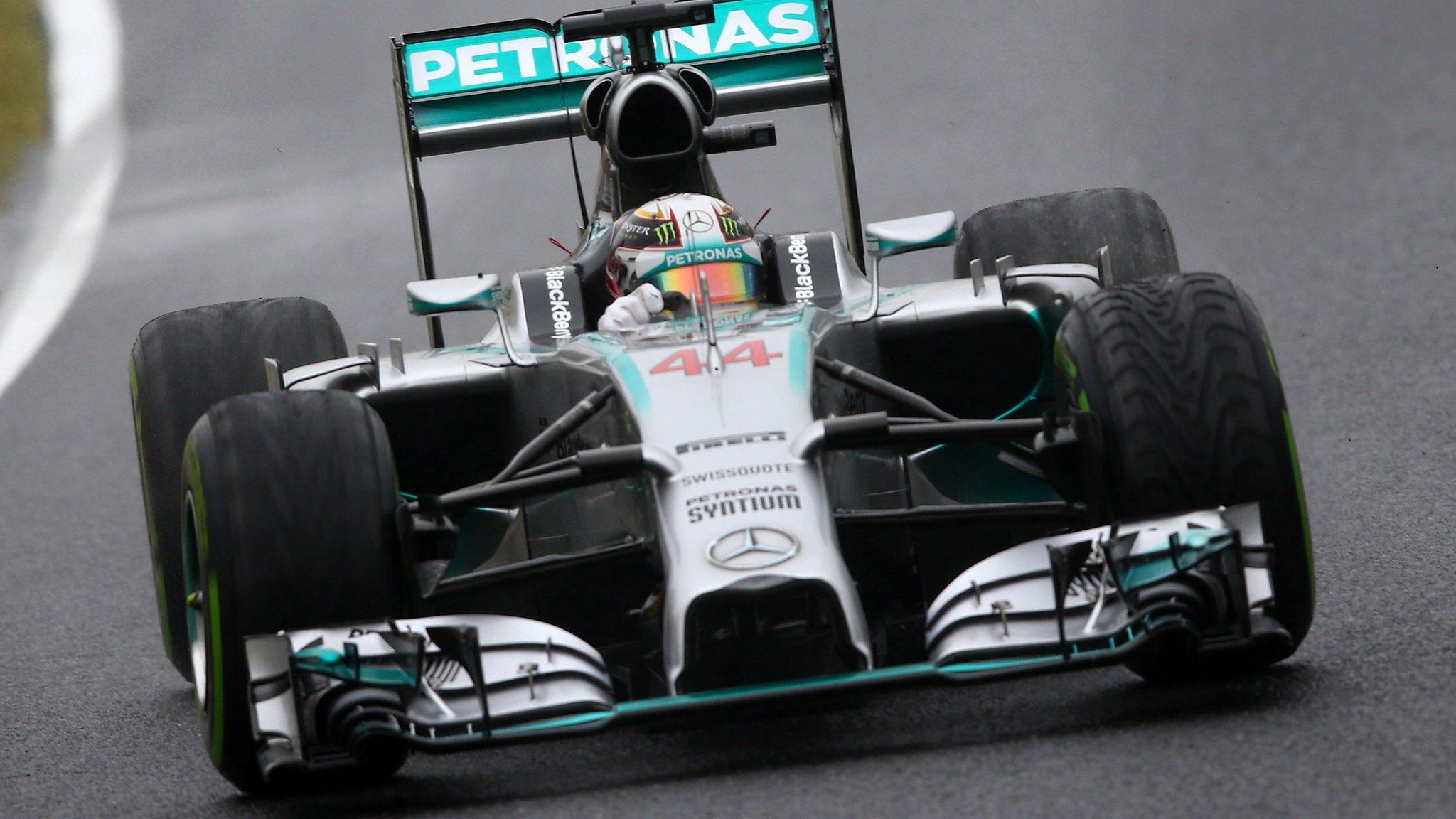
- Published2 November 2018

- Published26 February 2019
